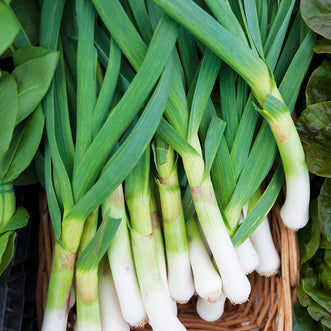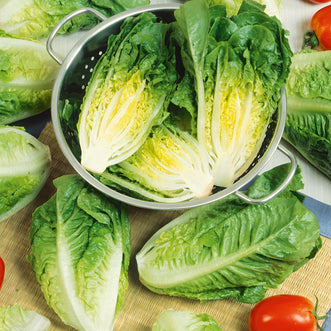
Green Manure Crops
CarolynWHICH GREEN MANURE CROP SHOULD I SOW?
It's so nice enjoying the garden at this time of year - everything is cropping beautifully and you can enjoy looking at your garden beds full of flowers and harvest your vegetables and herbs for eating straight away or preserving. However, the time will come when the summer crops are finished and you are considering what to put in the space left vacant. A superb option for vacant garden space is to sow a green manure crop. Last year I completely missed my window of opportunity for sowing a green manure crop so I thought that it would be good this season to have a look at green manure crops before the time comes to sow them. Gerard gave the staff lots of info last week on the why's and how's of green manure so we thought we'd pass it on....
How to ...
When sowing a green manure crop, sow into freshly tilled ground. Allow the crop to grow and then mow the crop down BEFORE FLOWERING. You don't want your green manure crop to go to seed and fill your garden with seeds that will become next year's weeds! After mowing down, allow the plant matter to dry out before you hoe it in. (If the location of your green manure crop allows it, you could run the lawnmower over it before hoeing in). This process will take about 60 days for most green manure crops, although Mustard can be quicker, taking about 40 days from sow to mow.
Why to ...
There are many reasons why sowing a green manure crop is a good idea for the health of your garden. Weeds will quickly take advantage of vacant space in your garden - sow a green manure crop to occupy the space instead. Having a green manure crop in place prevents erosion. Empty plots in your garden can be exposed to panning and caking caused by the sun, and you can lose precious topsoil to wind and rain erosion.
Once your crop is in place and growing, the benefits include increased levels of beneficial fungi and bacteria in the soil, soil does not dry out as easily and is broken up and aerated, allowing more microbes and insects in to do their work, and the crop can encourage beneficial insects by providing them with a food source. Some crops can aid with pest control in the soil (e.g.. Marigold).
When your crop is mown down and dug in, the broken down plant material adds humus, which helps with soil moisture retention.
Which one? ...
It does matter which green manure crop you sow. It is good practice to ensure that you are working to good crop rotation principles. Consider what has just been growing in that spot and avoid sowing a green manure crop of the same species. For example, if you have been growing cabbages or broccoli in a garden bed, don't sow a green manure crop that is also a brassica (e.g. radish or mustard). You would be doing far more good for your garden if you chose an unrelated species as a green manure crop (e.g. Phacelia).
It is also worth considering what crops will follow on from your green manure crop in that garden bed. For example, if you are going to be growing a crop of leafy greens, you may choose a green manure crop that will be a nitrogen fixer - choose Blue Lupin, Crimson Clover, Lucerne or a mix which contains Peas.
A tour of some of our Green Manure crops....

Spring Manure Mix
We usually recommend our Spring Manure Mix as an excellent green manure. We have formulated this mix to be the best choice for all year round sowing for the following reasons:
- it is frost hardy in most areas for most of the year - it may even handle a light sprinkling of snow!
- it provides huge bulk
- it contains two legumes (pea and lupin), for excellent nitrogen fixing qualities
- oats are included to provide green matter, with lots of fibre and carbon to add to your soil.
Mixed Grain Carbon Crop
Our Mixed Grain Carbon Crop is a blend of wheat, oats and barley. A benefit of this crop is that it can be harvested as stock fodder. The wheat and oats in this mix are frost hardy but barley is not.
Buckwheat
Buckwheat can be sown after any crop as is it not related to any other species, and it is great at attracting beneficial insects. Buckwheat is frost sensitive and prefers warm soils - sow in late spring and summer.
Phacelia
Phacelia is a very fast growing crop which looks very pretty with its purple flowers. It has a long growing period and can be sown right up until late April and again from September onwards.
Mustard
Mustard is a brassica - avoid sowing where other brassica crops have been growing. Mustard has a fumigant effect on the soil - it will kill bad bugs but will also kill good bugs.
Radish
Radish breaks up the soil to depth, and has a unique effect because it releases a sterilising gas - this makes Radish a good choice where you have a problem insect in the soil that needs a good blasting!
Some other green manure crops include Lucerne, Soybean and Crimson Clover.
We hope this has been helpful info and that you are inspired to get some green manure crops in, especially if you haven't tried it before. I'm certainly planning to try it this year!....no weeding, no bare, empty space looking reproachfully at me, lovely healthy soil for next growing season ... it sounds like a great idea to me!
Keep the comments coming - we love to hear from you! And don't forget to come and visit us on Facebook from time to time!


















































